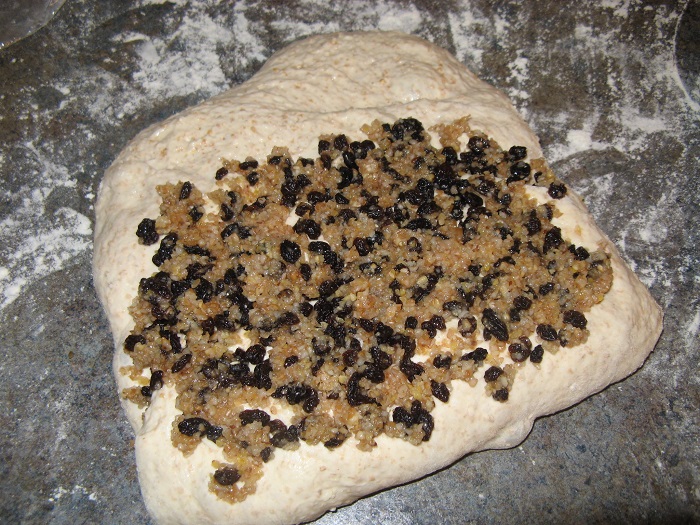As I said when I issued the 123 challenge, I needed an easy dough that I could use to test out new ingredients and compare techniques, etc. So to that end, I decided the other day to make dough for two 123 loaves. I was going to mix them together, then divide them and bulk ferment one in the fridge overnight, then shape and bake the next day, while the other was to be bulk fermented for a few hours, then shaped and proofed in the fridge overnight. I wanted to see if there was a significant difference between retarding the bulk ferment and retarding the shaped proof stage. The formula was:
- 200 grams of fresh young 100% hydration starter
- 400 grams of water
- 400 grams of bread flour
- 150 grams of whole wheat flour
- 50 grams of coarse whole rye flour
- 12 grams of sea salt
So far so good. However, I was stuck in a meeting that went an hour overtime, then had to make the dough for the following days' regular bake, so by the time I got to make the 123 dough, I didn't have enough hours to let it rise enough in bulk. I was falling asleep before it had risen much, so I gave up and put the dough for both loaves downstairs where it is quite cool right now.
This morning, the dough had definitely risen! It was very, very soft and pillowy, obviously over-proofed. It collapsed in a puddle when I dumped it out onto the counter.

So I decided to do something interesting with it, while at the same time finally responding to Murph's Honey Challenge. I had some leftover soaked 10-grain cereal (Bob's Red Mill; maybe about half a cup). I mixed this with a tablespoon or so of honey, the last currants remaining in the bottom of a bag and a bit of my new-favourite bread spice, cardamom.

I figured the cereal would soak up the honey so I wouldn't have the same problems Murph had, and the currants just seemed like a good idea. The dough was so soft and stretchy that I had no problem stretching it out into a rectangle. I spread the filling across two thirds of it, then letter folded and spread the rest of the filling, letter folding the other way and leaving it to rest (beside the other loaf, which had no filling).



Note the new bread rising frame, ready to be used!
The poor dough was so fragile by this point that when I rolled it carefully off the proofing mat onto the peel it nearly collapsed into another puddle. In fact, the un-stuffed loaf stuck to the peel even though it was floured and sprinkled generously with farina. I had to scrape it off onto another peel so I could get it into the oven. Sheesh!
However, then the magic of bread happened. Oven spring wasn't as great as it would have been if the dough hadn't been over-proofed. However, it was still good and the loaf burst dramatically along the single score I managed to put in it.

It smelled so good, I had to restrain myself and wait until it was at least mostly cool before slicing. I should have left it longer, as it was a teeny bit gummy, but it was so incredibly, wonderfully good that I didn't care. I could have eaten the entire loaf right then and there. It's moist, sweet and chewy, and I must make it again! The honey is very much there and everything else contributes to the overall goodness. Overall, a lovely mistake!

